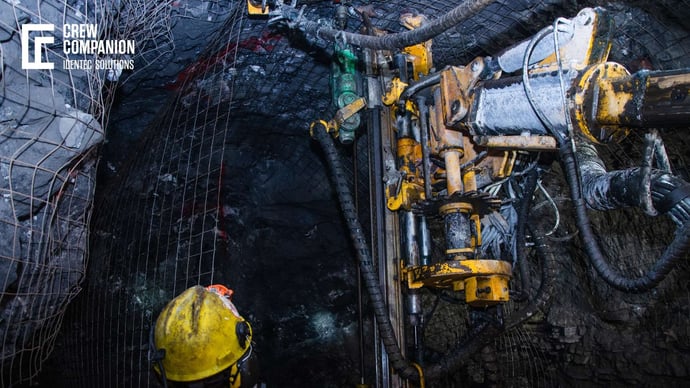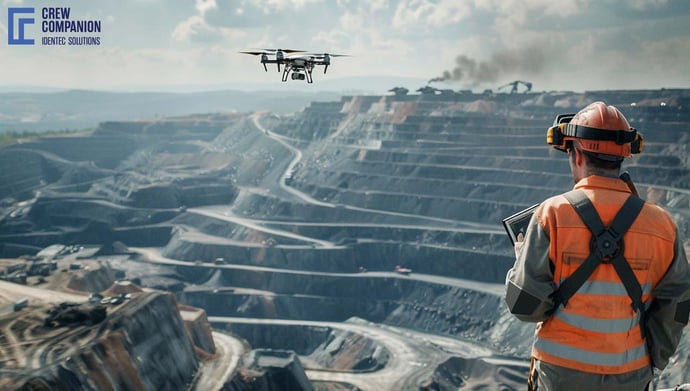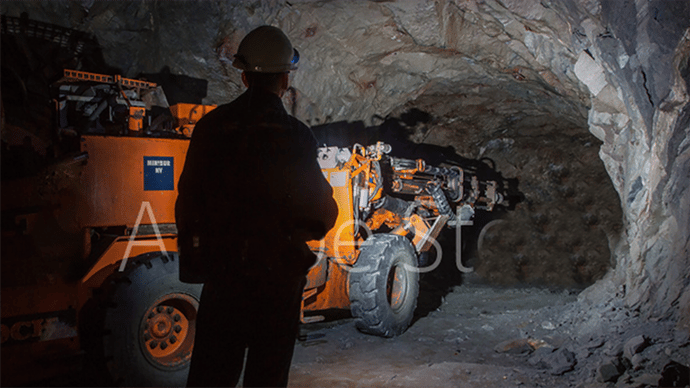Smart Mining, Safety and Technology
| Written by Mark Buzinkay

No video selected
Select a video type in the sidebar.
What is smart mining?
Smart mining refers to the integration of advanced technologies and digital solutions to improve the efficiency, safety, and sustainability of mining operations. It's about moving away from traditional, labour-intensive methods toward a more automated, data-driven approach. This includes using technologies like automation, artificial intelligence, big data analytics, the Internet of Things (IoT), drones, and robotics to optimise processes across the entire mining value chain — from exploration and extraction to processing and logistics.
Smart mining aims to make operations more productive while reducing costs and minimising environmental impact. For example, autonomous trucks and drilling systems can work around the clock with fewer safety risks, while real-time data monitoring helps in making quicker and better-informed decisions. Predictive maintenance, enabled by sensors and data analytics, allows companies to anticipate equipment failures before they happen, reducing downtime and extending the lifespan of machinery. Smart mining also contributes to improved energy efficiency and better resource management, which is increasingly important given the focus on sustainability and regulatory pressures, at least in some parts of the world.
What is the necessary backbone of smart mining?
The hardware behind smart mining is the physical backbone that makes all the advanced technology and automation possible in practice. Without the right hardware, all the data and software solutions wouldn't have anything to run on or collect from. It's a combination of rugged, high-performance equipment designed to survive extreme mining environments while reliably supporting connectivity, automation, and data gathering.
At the core of smart mining, you have industrial sensors and IoT devices — these are installed across mining equipment and infrastructure to collect real-time data on things like temperature, vibration, pressure, ore quality, fuel consumption, and machinery health. This data is essential for automation, predictive maintenance, and process optimisation.
Then, you have autonomous and semi-autonomous machinery, such as self-driving haul trucks, robotic drilling rigs, and automated loaders. These machines are equipped with GPS, lidar, radar, and cameras, allowing them to navigate the harsh terrain of mines without human drivers or with minimal remote supervision.
Another critical layer is communication infrastructure. Reliable, high-speed networks like private LTE or even 5G are deployed across mining sites to ensure real-time data transmission between equipment, control centres, and cloud platforms. Automation and remote operations wouldn't function smoothly without fast, low-latency connections.
You also need edge computing devices and rugged servers on-site. These process data locally, reducing reliance on cloud connectivity, which can sometimes be spotty in remote mining locations. This enables quicker decision-making and less downtime.
Additionally, drones and surveying robots play an important role, especially in exploration and site monitoring, but they are still experimental or unavailable in many mines. They collect topographical data, map out areas, and inspect infrastructure more safely and efficiently than manual methods.
Lastly, wearable technology for workers, like smart helmets, location trackers, and health monitoring devices, ensures miners safety by tracking conditions in real time and alerting teams to potential hazards.
In essence, smart mining hardware is an ecosystem of robust, interlinked physical components that enable mining operations to digitise and automate their processes while keeping safety, efficiency, and sustainability at the forefront.
Does smart mining make sense? Key areas to improve mining operations
Ore conveying in mining relies heavily on belt conveyors, which offer a flexible and cost-effective solution for moving ore across varying distances and elevations. These systems typically use a rubber-coated belt supported by V-shaped rollers that keep the material centred. However, if rollers seize, they can create friction and heat, eventually cutting through the belt and causing severe damage. Failures in bearings can escalate to conveyor fires, leading to unplanned downtime for repairs and clean-up. Manual inspections by maintenance crews are infrequent and risky due to the length and location of conveyors. Wireless technologies monitor temperature and vibration at multiple points to mitigate these risks.
After the ore is transported, it goes through primary crushing to reduce large, uneven chunks into manageable sizes. Crushers depend on steady, optimal feed flow, which is monitored using non-contact radar instruments that measure hopper depth and check for blockages. Real-time mine monitoring helps operators adjust feed rates, maintaining efficiency and preventing overload. Grinding and milling follow, which place considerable stress on equipment. These systems rely heavily on lubrication oil, and any failure in the lubrication system could result in catastrophic damage and prolonged downtime. Therefore, multiple instruments monitor oil flow, pressure, temperature, and vibration to protect equipment and prolong its life.
The next step, flotation, involves mixing the ground ore with water to form a slurry. Air is injected through spargers to create bubbles that attract fine ore particles, forming a froth skimmed from the surface. Sparger performance is crucial, and while traditionally monitored with mechanical gauges, they are now better managed with wireless pressure gauges that provide real-time data. Additionally, accurate slurry flow measurement is critical but difficult due to the abrasive and variable nature of the material. Specialised flow meters address this challenge. Maintaining the correct pH level is also vital, and rugged sensors ensure reliability in harsh conditions.
Given the high-risk environment, workplace safety is another fundamental concern in mining operations. Workers are exposed to numerous hazards, from heavy machinery and high temperatures to dust, vibration, and unstable ground conditions. Modern mines implement wearable technologies such as smart helmets and location tracking systems like Crew Companion that provide real-time data on worker location and vital signs to enhance personal safety. Wireless monitoring systems also help identify dangerous conditions early, such as gas leaks, ground movement, or equipment malfunctions, enabling rapid emergency responses. Automated equipment reduces the need for personnel to be in hazardous areas, while remote monitoring and control centres keep operators at a safe distance from active zones. Altogether, these technologies foster a safer work environment and reduce the likelihood of accidents and injuries.
Tailings management is another critical aspect, as improper control can lead to environmental disasters. Tailings ponds store waste materials while also providing recycled water for mining processes. Monitoring the pond's water level, solid distribution, and dam integrity is essential. Wireless submersible pressure transmitters, radar-level instruments, and vibrating fork-level switches work together to manage these risks effectively.
Finally, water management plays a central role in mining operations, especially given global concerns about water scarcity. Water is essential for mineral processing, dust suppression, cooling, and slurry transport. Cost-effective flow measurement solutions like clamp-on ultrasonic flow meters and magnetic flow meters with smart verification ensure accurate water tracking and regulatory compliance. Reliable level and flow transmitters help maintain a steady water supply while providing valuable data for environmental reporting and minimising manual monitoring.(1)
Smart mining and safety
As mentioned, workplace safety plays an integral part in modern mining. However, it bears great optimisation potential in terms of operations efficiency.
Blasting is a critical process in mining, used to fragment rock and access ore bodies efficiently. It involves drilling precise holes into the rock, filling them with carefully calculated amounts of explosive material, and detonating them to break the rock apart. The goal is to create optimal fragmentation, which makes downstream processes like hauling, crushing, and grinding more efficient. Timing and sequencing of the blasts are meticulously planned to control rock movement and minimise risks such as fly-rock, vibrations, and dust.
The role of miner monitoring becomes essential in this process, not only for safety but also for operational efficiency. Modern systems track the real-time location of every worker underground, ensuring that no personnel remain in hazardous zones during the blasting sequence. This visibility allows operations to proceed without unnecessary delays. Instead of waiting for manual checks to confirm the mine is clear, automated personnel tracking systems instantly verify when all miners have reached safe zones. This speeds up the entire blasting cycle, reducing downtime between rounds and enabling a more continuous workflow. In larger mining operations, these time savings can accumulate to significantly higher productivity.
From a safety perspective, it is absolutely vital that miners are clear of the blast area well before detonation. The force of the explosion can propel rock fragments at high velocities, create hazardous gas clouds, and destabilise nearby structures. Safe zones are designated based on blast calculations to ensure workers are shielded from these dangers. Real-time monitoring ensures compliance with safety protocols, triggers alarms if anyone is in harm's way, and provides mine operators with the confidence to proceed with blasting operations efficiently and securely. Combining precision blasting with advanced personnel tracking creates a safer, faster, and more reliable mining environment.
FAQ
What is smart mining, and how does it transform traditional mining operations?
Smart mining refers to the use of advanced digital technologies to modernise and optimise mining activities. It transforms traditional, labour-intensive processes by integrating automation, real-time data monitoring, predictive analytics, and interconnected systems. Equipment like autonomous haul trucks, automated drilling rigs, and smart sensors continuously collect and transmit data, enabling more precise control over operations. This data-driven approach improves productivity, reduces operational costs, and enhances safety by minimising human exposure to hazardous environments. Additionally, smart mining supports environmental goals by enabling more efficient resource usage and reducing waste.
How does smart mining improve worker safety in mines?
Worker safety is significantly enhanced through smart mining technologies. Real-time monitoring systems track the location and condition of personnel, ensuring they stay within safe zones, especially during high-risk activities like blasting (see also: . Wearable devices can monitor vital signs and environmental conditions, immediately alerting operators to potential health risks or dangerous situations such as gas leaks or structural instabilities. Automated equipment reduces the need for workers to be physically present in hazardous areas, while remote control centres allow operators to manage complex processes from safe distances. These advancements work together to lower the risk of accidents and improve emergency response times.
What role does smart mining play in improving environmental sustainability?
Smart mining plays a crucial role in making mining operations more environmentally responsible. By using precise sensors and data analytics, mining companies can better control water usage, energy consumption, and waste management. Advanced monitoring of tailings dams, for example, helps prevent environmental disasters by ensuring structural integrity and proper material handling. Automated processes also lead to more efficient ore extraction, reducing the ecological footprint of operations. Furthermore, real-time emissions monitoring enables companies to comply more effectively with environmental regulations and demonstrate commitment to sustainable practices.
Takeaway
Smart mining not only drives efficiency and sustainability but also transforms how mines manage health and safety risks. While automation and real-time monitoring optimise operations, they play an even more crucial role in protecting workers in high-risk environments. Continuous tracking of miner locations, wearable health devices, and advanced alert systems ensure rapid responses to hazards like gas leaks, equipment failures, or unsafe conditions. As mining technology advances, safeguarding human lives becomes inseparable from operational success, making miner safety technologies a central focus for the future of smart, responsible mining.
Delve deeper into one of our core topics: Mining safety
Glossary
In mining, conveying refers to the process of transporting bulk materials such as ore, overburden, or waste across distances within the mining site or to processing facilities. Conveyor systems, typically consisting of belts, pulleys, and rollers, enable continuous, efficient, and cost-effective material movement, reducing the reliance on haul trucks and manual handling. Conveying improves operational flow, lowers energy consumption, and enhances safety by automating material transport.
References:
(1) https://northamericanmining.com/index.php/2025/03/24/safe-smart-and-sustainable/
(2) Hartman, H.L., & Mutmansky, J.M. (2002). Introductory Mining Engineering. Wiley.

Author
Mark Buzinkay, Head of Marketing
Mark Buzinkay holds a PhD in Virtual Anthropology, a Master in Business Administration (Telecommunications Mgmt), a Master of Science in Information Management and a Master of Arts in History, Sociology and Philosophy. Mark spent most of his professional career developing and creating business ideas - from a marketing, organisational and process point of view. He is fascinated by the digital transformation of industries, especially manufacturing and logistics. Mark writes mainly about Industry 4.0, maritime logistics, process and change management, innovations onshore and offshore, and the digital transformation in general.





